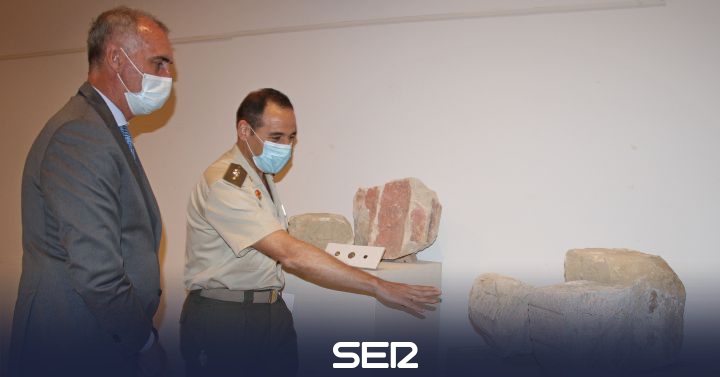The territorial delegate of the Board in Segovia, José Mazarías, and the Alcazar of the Alcázar, Colonel Alejandro Serrano Martínez, have formalized in the Museum of Segovia the act of delivery of materials from the preventive archaeological works linked to the remodeling project of the square del Alcázar, or Plaza de la Reina Victoria Eugenia, promoted by the Patronage of the fortress, and whose works began in January 2019.
The event, which was also attended by the archaeologist responsible for the archaeological interventions, Ricardo de Cáceres, and the director of the Museum of Segovia, Santiago Martínez, has highlighted the value and need for inter-institutional collaboration for research and documentation of the historical artistic heritage and for its safeguarding and conservation.
The batch of archaeological materials deposited in the Museum covers a temporary arch that goes from medieval times to the 18th century and is made up of twenty pieces, seventeen of them are architectural elements -such as ashlars and fragments of moldings-, and three are real silver . The stone fragments correspond mostly to remains found from the old cathedral of Santa María de Segovia. The complex has been recovered during the archaeological intervention associated with the works that, in addition to assuming compliance with current legislation on heritage, is a guarantee of the identification and cleaning, excavation, documentation, study and conservation of the structures, contexts and materials that can be found during the development of the planned rearrangement works.
The pieces have been recovered throughout the different archaeological surveys carried out to date, specifically, in verification ditches 1 and 2, in the drainage ditch of the north wall, in the aqueduct distributor-sand trap and in the ditch next to the access gate to the square.
Although the archaeological intervention continues, the work already carried out has resulted in the identification of a drinking water distribution network infrastructure that has its origin in the reorganization of the Plaza de la Reina Victoria Eugenia carried out by Felipe II in the decade from the 70s of the 16th century.
The pieces deposited in the Museum as well, as the rest of the collections that it hoards, constitute an indispensable resource for the knowledge of the past of the city and the province. The Museum deals with its study, cataloging, conservation and dissemination. The lot whose delivery has been formalized today is only a part of the material recovered in the interventions associated with the recent restoration projects of the Alcázar. The definitive inventory of the bulk of the archaeological material of these interventions will be delivered together with the final report-memory of the different archaeological actions carried out.
–

